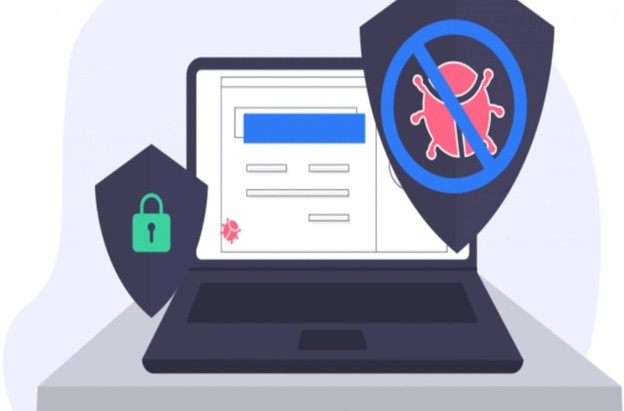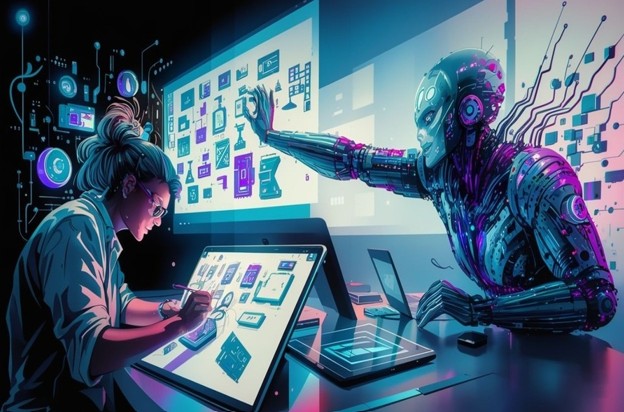Best Selling Products
The Silent Enemy: How to Identify and Effectively Prevent Computer Viruses
Nội dung
- 1. What is a computer virus? The nature of computer viruses
- 2. How computer viruses spread and work
- 2.1. Common transmission routes
- 2.2. How viruses work when they enter the system
- 3. Common types of computer viruses today
- 3.1. Traditional viruses (File viruses, Boot sector viruses)
- 3.2. Modern viruses (Worms, Trojans, Ransomware)
- 4. The harmful effects of computer viruses on devices and data
- 4.1. Impact on performance and hardware
- 4.2. Harm to data and privacy
- 5. Measures to prevent and protect the system from viruses
- 6. How to check and handle when your computer is infected with a virus
- 6.1. Signs of a computer infected with a virus
- 6.2. Steps to take when detecting virus infection
A computer virus, by technical definition, is a malicious software program designed to infiltrate, replicate, and damage computer systems. Unlike regular software that is created to serve humans, computer viruses are developed with the intention of causing destruction and unauthorized control.

In today's digital age, when computers and the internet have become an indispensable part of work, study and personal life, protecting data and systems from cyber threats has become more important than ever. One of the most common and dangerous threats is computer viruses. They can silently infiltrate, destroy data, steal personal information or paralyze the entire system in just a few seconds. So what are computer viruses, why are they so dangerous, and how to prevent them effectively? Let's find out more in the article below to equip yourself with the necessary knowledge to protect your personal data and devices in the safest way.
1. What is a computer virus? The nature of computer viruses
A computer virus, by technical definition, is a malicious software program designed to infiltrate, replicate, and damage computer systems. Unlike regular software that is created to serve humans, computer viruses are developed with the intention of causing destruction and unauthorized control.
The name “virus” is inspired by biological viruses, because they have the same ability as viruses in the human body – to invade, replicate and spread from one system to another. It is worth noting that computer viruses cannot operate independently but need to “parasitize” other legitimate files or programs in order to be activated and executed.
The role and purpose of viruses in the digital environment are diverse, from collecting personal information, destroying data, to remotely controlling systems. Some viruses are created simply to demonstrate programming skills, but most have financial or political motives behind them.
.jpg)
The nature of computer viruses lies in their unique ability to replicate themselves. When a virus enters a system, it attempts to copy itself into other files, thereby creating multiple copies and expanding the scope of infection. This process occurs silently, making it difficult for users to detect it immediately.
The mechanism of computer viruses usually follows a fixed process: penetration, incubation, activation and spread. The penetration stage occurs when the virus finds a vulnerability in the system to penetrate. After that, the virus will be in an incubation state, hiding in the system without causing any suspicious signs.
When a trigger condition is met, which could be a specific date, the performance of a certain action, or when the system reaches a certain state, the virus will begin to perform harmful actions. These actions can include deleting important data, stealing sensitive information such as passwords and bank account information, or slowing down the computer by consuming system resources.
2. How computer viruses spread and work
2.1. Common transmission routes
Computer viruses can spread in many different ways, and understanding these methods will help us prevent them more effectively. The most common way today is through email attachments. Attackers often disguise viruses as attractive office documents, images or videos to trick users into opening the file.
Downloading software from untrusted sources is also a very common way to spread viruses. Many viruses are hidden in cracked software, pirated games, or free applications from unknown websites. When users install these software, the virus will be activated at the same time.
.png)
Portable storage devices such as USB drives and external hard drives are also effective vectors for viruses. When an infected device is plugged into a clean computer, the virus can automatically run and infect the new system. This is especially dangerous in an office environment where employees frequently share data via USB.
Social networks and malicious websites are also becoming increasingly popular channels for spreading viruses. Viruses can be spread through suspicious shortened links, pop-up ads, or fake applications on social networks. Users are often fooled by attractive invitations such as “Watch the hottest videos”, “Download free games” without knowing that these are actually traps of attackers.
2.2. How viruses work when they enter the system
Once a virus has successfully penetrated a system, it begins a complex and highly strategic process. The first step is to establish a foothold in the system by copying itself into important system folders or registering itself on the operating system startup list.
Viruses often use sophisticated methods to hide themselves. They can disguise themselves as legitimate system files, changing their names and attributes to avoid detection. Some viruses are even able to disable anti-virus software or firewalls to ensure their long-term survival in the system.
It is worth noting that many viruses operate on a conditional activation mechanism. They can lie dormant in a system for months without causing any suspicious signs, until the activation conditions are met and they begin to perform destructive actions. This makes detecting and preventing viruses much more difficult.
3. Common types of computer viruses today
.png)
3.1. Traditional viruses (File viruses, Boot sector viruses)
File viruses are the oldest type of viruses, they infect by attaching themselves to executable files such as .exe, .com or documents with macros. When the user runs the infected file, the virus is activated and begins to spread to other files. A notable feature of file viruses is that they often increase the size of the original file, however with modern compression technology, this change may be insignificant.
Boot sector viruses attack the boot sector of a drive, which is the first part the operating system reads when starting a computer. These viruses are especially dangerous because they are loaded into memory as soon as the computer starts up, before the operating system and security software. This allows them to take full control of the system and is very difficult to detect.
Although they are called traditional viruses, these two types of viruses still exist and thrive in the modern era. They have been improved with more sophisticated stealth techniques and the ability to resist modern anti-virus software.
3.2. Modern viruses (Worms, Trojans, Ransomware)
.png)
A computer worm is a type of virus that can spread itself across a network without user intervention. Unlike traditional viruses that need to be activated by running an infected file, computer worms can automatically search for and exploit security holes in the system to penetrate. The most dangerous feature of computer worms is their ability to spread extremely quickly across the network, potentially attacking thousands of computers in just a few hours.
Trojans are viruses that disguise themselves as useful software to trick users into installing them. The name comes from the Greek myth of the wooden horse of Troy. Trojan viruses do not typically replicate themselves like other viruses, but instead focus on creating a backdoor for attackers to gain remote access to the system. They can steal personal information, record keystrokes, or turn a computer into a link in a botnet.
Ransomware is the most dangerous virus today, it encrypts all data on the computer and requires users to pay a ransom to get the data back. This virus has caused billions of dollars in damage worldwide, attacking from individuals to large corporations and even government agencies. The scariest thing is that even if the ransom is paid, the victim is not sure to get the data back.
4. The harmful effects of computer viruses on devices and data
.png)
4.1. Impact on performance and hardware
Computer viruses can significantly reduce system performance in a variety of ways. One of the most common effects is that viruses consume system resources such as CPU, RAM, and network bandwidth to perform their activities. When viruses operate in the background, they can take up 50-80% of system resources, causing the computer to run slowly, freeze, and frequently crash.
Some viruses are designed to cause direct damage to hardware. They can overload components such as CPUs or graphics cards by forcing them to run at maximum capacity for long periods of time. This not only reduces the lifespan of the hardware, but can also cause permanent damage. Viruses can also overwrite the firmware of devices, causing irreversible damage.
The consequences of a virus damaging hardware are not only replacement costs, but also downtime and data loss. For businesses, this can result in serious financial losses due to business interruption.
4.2. Harm to data and privacy
Data loss is one of the most serious consequences of computer viruses. Viruses can delete, corrupt, or encrypt important data, either intentionally or as a side effect of their operation. Important documents such as photos, work documents, or business data can disappear completely in a matter of minutes.
Personal information leakage is another serious threat that viruses pose. Viruses can collect and transmit sensitive information such as passwords, bank account numbers, credit card information, or personal documents.
The risk of online account theft is also high when a computer is infected with a virus. Viruses can record keystrokes (keyloggers) to collect login information for social networking, email, or online banking accounts. Once attackers have access to these accounts, they can perform a variety of illegal activities.
5. Measures to prevent and protect the system from viruses
.png)
Computer virus protection should be done proactively and systematically. The first and most important measure is to always keep your operating system and all software updated to the latest version. Updates often contain security patches to fix vulnerabilities that viruses can exploit. Enabling automatic updates will ensure that your system is always protected by the latest security measures.
Using reputable and quality antivirus software is an indispensable element of the protection strategy. A good antivirus software not only detects and removes known viruses but also has the ability to detect new threats through behavioral analysis techniques. Equally important is the regular updating of the virus database so that the software can identify the latest threats.
Safe computer usage habits play a decisive role in virus prevention. Avoid opening attachments from unknown sources, especially files with executable extensions such as .exe, .scr, .bat. Be careful when clicking on links from emails or social networks, especially links with attractive or shocking content.
Regularly backing up your data is a last resort but extremely important safeguard. Even if all other precautions fail, having a complete backup will allow for quick recovery of your data. Back up your data to multiple media, including cloud storage and physical devices, and regularly test the integrity of your backups.
Setting up an effective firewall helps control network traffic entering and leaving your system. Firewalls can prevent viruses from communicating with remote servers or from downloading other malicious components. Firewalls should be configured to block unnecessary connections and allow only trusted applications to access the network.
6. How to check and handle when your computer is infected with a virus
.png)
6.1. Signs of a computer infected with a virus
Recognizing the early signs of a virus infection is an important first step in the treatment process. The most obvious sign is an unusually slow computer that takes a long time to boot up, open applications, or perform simple tasks. This happens because viruses consume system resources to carry out their activities.
Computers that frequently freeze, reboot automatically, or display the Blue Screen of Death are also warning signs. Viruses can cause conflicts with the operating system or other applications, leading to system instability.
Persistent pop-ups, especially irrelevant ads or fake virus warnings, are a clear sign of a malware infection. Adware viruses often generate these pop-ups to generate advertising revenue or trick users into installing additional malware.
Strange activity such as email accounts that automatically send spam, or files that are encrypted or changed without user intervention, are serious signs of a virus infection. Additionally, mysteriously shutting down your antivirus software or firewall can also be a warning sign of a virus in your system.
6.2. Steps to take when detecting virus infection
.png)
When you detect signs of a virus infection on your computer, the first step is to disconnect it from the internet to prevent the virus from communicating with its control server or downloading other malicious components. This also helps prevent the virus from spreading to other computers on the network.
Next, you need to start your computer in Safe Mode to limit the virus's ability to operate. In this mode, only the most necessary services and drivers are loaded, helping the antivirus software work more effectively.
Performing a full system scan with quality antivirus software is the next important step. It is recommended to use both your local antivirus software and online virus scanning tools to ensure that you do not miss any threats. Scanning can take several hours, but patience is needed to ensure effectiveness.
If your antivirus software fails to completely remove the virus, you may need to use system restore to return your computer to a state before it was infected. In severe cases, a complete reinstallation of the operating system may be the only solution.
After the virus is removed, change all important passwords such as email, social networks, online banking as they may have been collected by the virus. Also, check the integrity of the data and restore from backup if necessary.
Always keep your anti-virus software up to date, do not download strange files, be careful with links of unknown origin and regularly back up important data. A few simple steps can help you avoid serious consequences. Finally, do not wait until an incident occurs to start worrying. Proactively protecting your computer today is a smart investment for your safety.












































